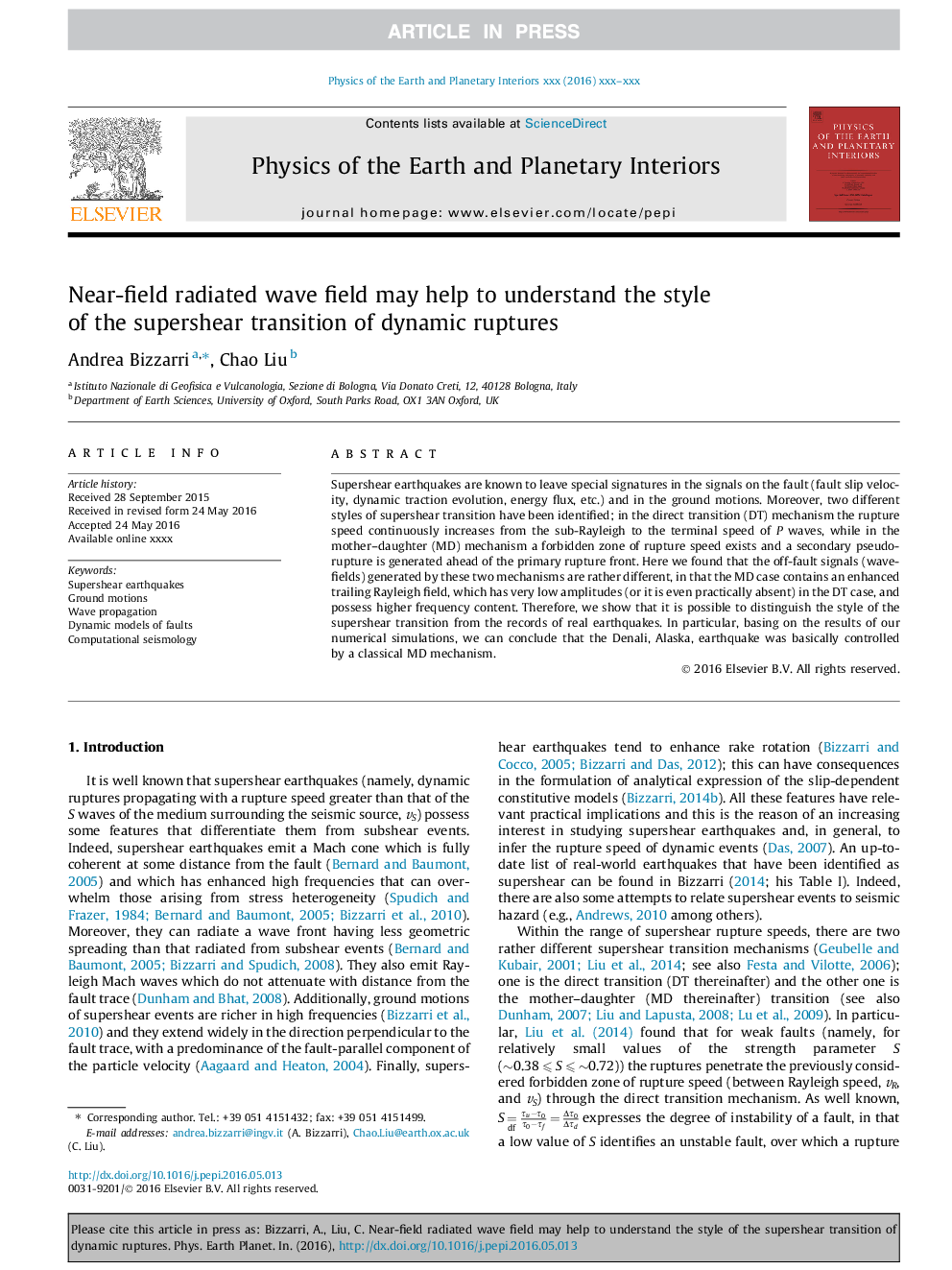| Article ID | Journal | Published Year | Pages | File Type |
|---|---|---|---|---|
| 5787388 | Physics of the Earth and Planetary Interiors | 2016 | 8 Pages |
Abstract
Supershear earthquakes are known to leave special signatures in the signals on the fault (fault slip velocity, dynamic traction evolution, energy flux, etc.) and in the ground motions. Moreover, two different styles of supershear transition have been identified; in the direct transition (DT) mechanism the rupture speed continuously increases from the sub-Rayleigh to the terminal speed of P waves, while in the mother-daughter (MD) mechanism a forbidden zone of rupture speed exists and a secondary pseudo-rupture is generated ahead of the primary rupture front. Here we found that the off-fault signals (wavefields) generated by these two mechanisms are rather different, in that the MD case contains an enhanced trailing Rayleigh field, which has very low amplitudes (or it is even practically absent) in the DT case, and possess higher frequency content. Therefore, we show that it is possible to distinguish the style of the supershear transition from the records of real earthquakes. In particular, basing on the results of our numerical simulations, we can conclude that the Denali, Alaska, earthquake was basically controlled by a classical MD mechanism.
Related Topics
Physical Sciences and Engineering
Earth and Planetary Sciences
Geophysics
Authors
Andrea Bizzarri, Chao Liu,
